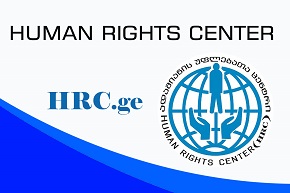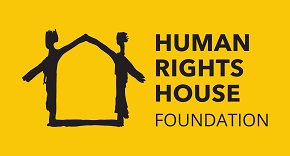Population of Ninotsminda still Suffering from the Disaster

The Trace of Ecological Disaster, Happened a Year Ago is Deepening Every Day
Residents of Sagaredjo Region are still suffering from the horrible results of oil disaster that took place on September 10, 2004. Due to the fact that for three days oil and gas had been gushing out of a borehole following a well blowout a big part of woods was destroyed, water and earth were polluted and as a result of inhaling the gas the residents were poisoned and children turned out to be in particularly heavy condition. They turned out to have intoxicative bacteria in the blood.
It still remains vague and unknown for the society what kind of gas gushed out and what poisonous substances the residents of Ninostminda had been inhaling during three days.
On September 10, 2004 the population of Sagaredjo Region had unexpectedly experienced the oil rain. Gas and oil began gushing out from N100 well which had been capped for several months before the catastrophe and only reparation works had been going on there. According to Temur Gogilashvili, the manager of the oil company, the blow out occurred due to uncontrollable and unforeseeable processes happening deep in the earth. It is unknown how much gas and oil gushed out from the well.
Residents of the village Ninotsminda appeared in particularly heavy situation. For three days they were surprised to watch the oil-rain spread by the wind. Human Rights Information and Documentation Center visited the village Ninotsminda regarding the abovementioned situation right after the catastrophe and studied the situation on the place (detailed information about the results of catastrophe could be found on the webpage: http://www.humanrights.ge/eng/stat50.shtml). However, eleven months later, the situation has not improved.
Drinking water was polluted during the catastrophe as well as the population was seriously poisoned, that especially revealed in children and women. The oil-company examined the drinking water for several times that proved to be clean and not polluted. So, the population was allowed to use the water as drinkable. Only the researches and tests of the professor Pagava, carried out nine months later, proved that the water was polluted. The test shows that the pollution concentration in the water is forty-five times more then it should be according to the set norms. As a result, a lot of people got sick. At present the village population is supplied with the drinking water by special cars.
According to Shio Shioshvili, the head of the local government of the village Ninotsminda and Tskarostavi, doctors took care of the whole population. However, the local residents say, that the medicines distributed among the population were just sedatives and anti-allergy drugs. Nevertheless, the population needed serious medical examination to state the type of poisoning and then to have further treatment. Most of the population could not afford to undertake the needed treatment by themselves. We should also mention that the population is concerned about the fact that all the laboratories were blocked not to put the right diagnose. Only very few of them managed to take children to the capital for treatment and are still under treatment. Though, it should also be mentioned that the representatives of the oil-company refuse the fact of poisoning the population. The Minister of Healthcare Lado Chipashvili went to Ninotsminda and promised the population to help them, but this promise remained only as words.
Despite the little assistance provided by the Company (namely, allocated the compensation of 845 thousand Gel, from which only 200 thousand was disseminated among the people), the residents are frustrated even now. People can not hide their aggravation, as the government puts the interests of the company higher then the interests of the people and is trying to conceal the fact from the society. The fact, that even mass media does not take big interest towards the fact gives basis to serious suspicions among the population and serves as a big reason for their concern. One thing is really clear – the government does everything to keep the fact hidden from the international community.
Health insurance papers of “Aldagi” (the Insurance Company) were given free to the residents of the village by the administration of “Canargo Georgia“. The Population of Ninotsminda stated that these insurance policies are only for laboratory tests that could not be enough for them. They demanded the extension of functions of insurance papers.
The Company refused to satisfy this demand so, the population of Ninotsminda applied to the Court, where they demanded compensation of 28 million Gel from the owners of “Canargo Georia”.
The action was brought to the court in November 2004. Though, in spite of having all necessary documents by the local government, the court has already been postponed several times. We found out, that the case has been still sent to investigation. The population does not hide their doubt that some negotiations between the Court and the President of “Canargo Georgia” might be taking place.
Human Rights Information and Documentation Center has replied to the incident in Ninotsminda already for the second time and once more expresses huge concern about the ecological disaster occurred in Ninotsminda. HRIDC demands impartial investigation of the fact, conducting of alternative expertise and giving compensation to the population.
Tea Gvaradze
Keti kuratashvili



